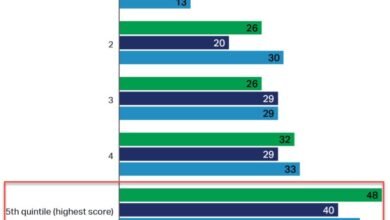The Winning Formula for Business Excellence: Organisation Experience : (Ex + Cx + Ix + Sx) = Ox

By | Editor
Renowned HR Guru and Father of Modern HR, Dave Ulrich has been great advocate about Organisation Experience (Ox). He was one of the first to suggest that we need to adopt a holistic approach by getting all stakeholders involved in our endeavour to provide superior Organisation Experience.

Carrying forward his ideology, lets understand how to do we take this forward.
What is Organisation Experience (Ox)?
Organization Experience (Ox) refers to the holistic view of how an organization is perceived and experienced by its various stakeholders, encompassing employees, customers, investors, and the broader community. This concept is integral to understanding the overall health and effectiveness of a company. Here’s a breakdown of what Organization Experience entails:
- Multidimensional Integration: Ox is not just about a single aspect of a company, like its financial performance or customer service quality. It’s an integrated measure that combines multiple dimensions of a business, including the internal workplace environment (Employee Experience), customer interactions and satisfaction (Customer Experience), financial and governance aspects as perceived by investors (Investor Experience), and the company’s impact on and relationship with the wider community and environment (Society or Community Experience).
- Reflective of Overall Health: Ox provides a comprehensive reflection of the company’s overall health. A positive Organization Experience indicates a company that is not only financially successful but also excels in creating a positive workplace, delivering high-quality customer service, maintaining good investor relations, and contributing positively to society.
- Indicator of Sustainability and Success: Ox is an indicator of a company’s long-term sustainability and success. Companies that manage to achieve a high level of Organization Experience are often more resilient, adaptable, and innovative. They are better positioned to attract and retain top talent, maintain customer loyalty, secure investor confidence, and uphold a positive reputation in the community.
- Cultural and Ethical Barometer: It also serves as a barometer of the company’s culture and ethical practices. A strong Ox suggests a company that values ethical practices, inclusivity, transparency, and social responsibility.
- Strategic Tool for Improvement: For business leaders and managers, Ox is a strategic tool. Understanding and improving the Organization Experience can lead to better decision-making, more effective strategies, and enhanced stakeholder engagement.
Organization Experience is a broad and inclusive concept that captures the essence of how an organization is perceived and experienced by all its stakeholders. It underscores the interconnectedness of various aspects of a company’s operations and their collective impact on its reputation, sustainability, and success.

How do we build a great Organisation Experience
In the intricate design of modern business, the intertwining of employee experience (Ex), customer experience (Cx), investor experience (Ix), and society (community) experience (Sx) to form the overarching organization experience (Ox) stands as a testament to the interconnectedness of various aspects of a company’s operations. This formula, (Ex + Cx + Ix + Sx) = Ox, is more than just a catchy equation; it’s a profound insight into how the internal and external facets of a business are inextricably linked, each feeding into and enhancing the other, culminating in the overall health, reputation, and success of an organization. . It provides a comprehensive framework for understanding the multifaceted nature of modern business. Each component plays a crucial role in shaping the overall health and success of an organization.
The Evolution of Business Perspectives
Historically, businesses primarily focused on customer experience, operating under the assumption that success was almost exclusively driven by customer satisfaction and loyalty. While customer experience remains a pivotal component of business success, there has been a paradigm shift in how companies view their internal environment — specifically, how they manage and support their employees.
The Rising Importance of Employee Experience
Employee experience has emerged as a critical factor in this modern business equation. It encompasses every aspect of an employee’s interaction with their employer, from the recruitment process, workplace environment, and job role to their relationship with management and career development opportunities. The realization that employees are not just cogs in a machine but ambassadors of the company’s values and drivers of customer satisfaction has reshaped organizational strategies.
The Symbiotic Relationship Between Ex and Cx
This symbiotic relationship suggests that employees who are engaged, valued, and satisfied in their roles are more likely to deliver a higher quality of service, thereby enhancing the customer experience. Conversely, positive feedback and satisfaction from customers can significantly boost employee morale and motivation, creating a virtuous cycle.
Vineet Nayar in his book Employees First, Customers Second: Turning Conventional Management Upside Down was one of the strongest advocate of putting employees ahead of customers. He believed that happy employees make happy customers.
Integrating Investor Experience (Ix)
Investor Experience is another crucial dimension. Investor Experience is a critical aspect that influences an organization’s ability to secure and maintain the financial support necessary for growth and sustainability. It encompasses investors’ perceptions and interactions with the company, focusing on financial performance, strategic decision-making, transparency, and corporate governance. A positive experience for investors leads to sustained financial backing and confidence in the company’s future, directly impacting its ability to invest in employee and customer-related initiatives. In essence, investor experience reflects how well a company manages its relationships with the financial stewards of its resources.
Embracing Society (Community) Experience (Sx)
Society or Community Experience focuses on the broader impact of a company beyond its immediate business activities. This includes how a company contributes to the welfare of the communities in which it operates, its environmental stewardship, and its ethical practices. It reflects a company’s impact on its external environment. This includes corporate social responsibility, environmental sustainability, and contributions to local communities. Companies that excel in creating a positive societal impact benefit from enhanced brand reputation, customer loyalty, and community support, further solidifying their market position.
A positive community experience is vital for maintaining a company’s social license to operate. Companies that excel in creating a positive societal impact often enjoy enhanced brand reputation, customer loyalty, and community support further solidifying their market standing & position.
The Comprehensive View: Organization Experience : Ex + Cx + Ix + Sx = Ox
The Ox framework presents a holistic view of an organization’s performance and impact. It represents the cumulative effect of how well a company manages and integrates these diverse but interconnected experiences.
- Direct Influence: Employees who are satisfied and motivated are more likely to deliver superior customer service. This, in turn, enhances the customer experience. When employees feel valued and empowered, they are more inclined to go the extra mile to ensure customer satisfaction.
- Culture and Brand: The internal culture of an organization significantly affects both employee and customer experiences. A positive, inclusive, and supportive culture not only boosts employee morale but also shines through in customer interactions, enhancing the brand’s perception.
- Feedback Loop: Both employee and customer feedback provide valuable insights into the strengths and weaknesses of an organization. This feedback is crucial for continuous improvement and adaptation.
- Financial and Ethical Balance: The addition of Ix and Sx to the equation highlights the importance of balancing financial objectives with ethical considerations and societal impact.
- Stakeholder Integration: The expanded formula underscores the need for an integrated approach to managing different stakeholder groups, recognizing that each group’s experience can significantly influence the others.
- Long-term Sustainability: This comprehensive approach to understanding organizational health focuses not just on immediate gains but on long-term sustainability and reputation.
The culmination of these experiences – employee, customer, investor, and community – defines the Organization Experience (Ox). Ox is a holistic concept that reflects the company’s culture, values, and operational effectiveness. It’s a measure of how well a company harmonizes its internal and external interactions to create a cohesive, productive, and positive environment. Ox is not just about financial metrics or market share; it’s about creating a sustainable, positive, and dynamic culture that fosters growth, innovation, and success.
The Ex + Cx + Ix + Sx = Ox equation underlines a fundamental truth in the business world: the experiences of employees, customers, investors, and the community are not isolated variables but are deeply interconnected. It offers a nuanced perspective on the dynamics of modern business operations. It emphasizes that the success of an organization is not just a product of its internal mechanisms and customer interactions but also a result of its financial stewardship and societal contributions. They together paint a comprehensive picture of an organization’s health, culture, and potential for long-term success. This understanding necessitates a holistic approach, where nurturing each aspect of this equation is seen as crucial for the thriving of an organization in today’s competitive landscape.
By understanding and nurturing each aspect of this equation, organizations can create a harmonious, sustainable, and ethically grounded ecosystem that drives long-term success and positive impact in the broader world.
Want to know how to measure Employee Experience in your organization? Please find answers in the Book, Making People Count : How to measure the ROI on Human Capital, by Ramesh Ranjan. Know more about the book at https://lnkd.in/deM4KHzg.
You can order a copy of the Book on Amazon @ https://lnkd.in/gzAcWAG4hashtag#EmployeeExperience






